Emerald Cut Engagement Rings: The Complete Guide
Clean lines, mirror-like flashes, and Art-Deco elegance — the emerald cut is a modern classic. This guide covers proportions, sparkle, settings, pros & cons, care, and how to customize one that feels uniquely yours.
Ready to design yours? Explore our custom jewelry design process or start a bespoke emerald-cut ring request.
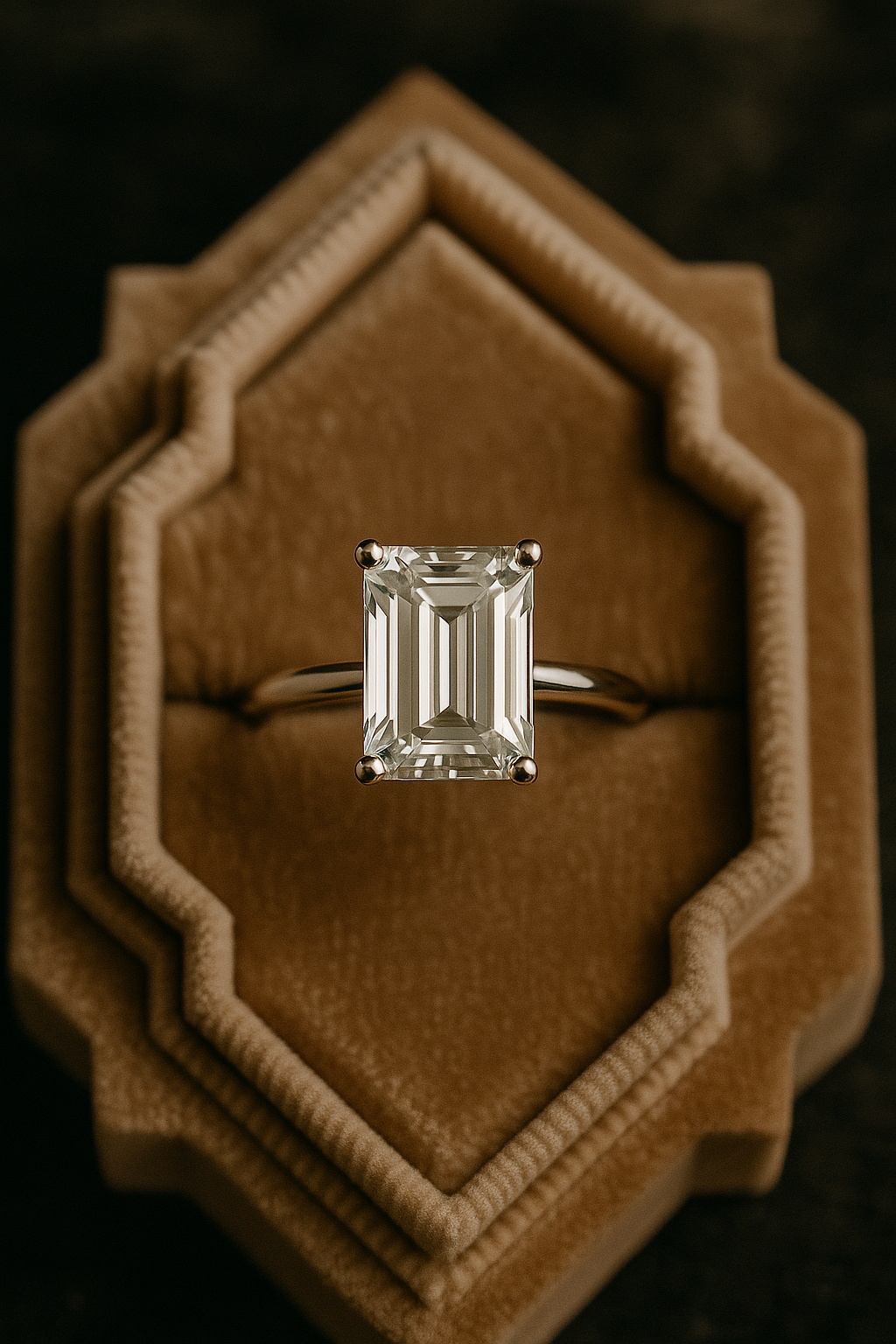
What is an emerald cut?
The emerald cut is a step-cut shape with parallel linear facets and cropped corners. Rather than the intense “pin-fire” sparkle of round brilliants, emerald cuts show a hall-of-mirrors effect: broader, elegant flashes that feel architectural and refined. Because the large table is open, you experience the diamond almost like viewing through a window — sophisticated and honest.
If you’re new to diamond basics, GIA’s introductions to diamond clarity and buying fundamentals are excellent primers.
Key specs & recommended ranges
Every diamond is individual, but these ranges are helpful starting points when you love a crisp, balanced look:
| Parameter | Recommended | Why it helps |
|---|---|---|
| Length-to-Width | 1.30 – 1.50 (classic) · 1.20–1.29 (squarer) · 1.51–1.60 (elongated) | Controls the silhouette. 1.35–1.45 reads “timeless” to most eyes. |
| Table | 60% – 68% | Keeps the top balanced; too large can feel glassy, too small feels dark. |
| Depth | 60% – 69% | Helps maintain size face-up while avoiding windowing. |
| Girdle | Thin – Slightly Thick | Avoid Extremely Thin (chipping risk) and Extremely Thick (unnecessary weight). |
| Clarity | Eye-clean SI1–VS2+ (review individually) | Step facets reveal inclusions more easily; eye-clean is the goal, not a fixed grade. |
| Color | G–H for platinum/white gold · I–J works beautifully in yellow/rose gold | Warm metals “forgive” color; cool metals emphasize it. |
Want to compare different gem looks? For a softer, symbolic route, see our moonstone engagement ring guide, or explore color in tourmaline engagement rings.
Best settings for emerald cuts
Because the outline is graphic, settings that echo straight lines or frame the stone tend to sing:
1) Minimal solitaire
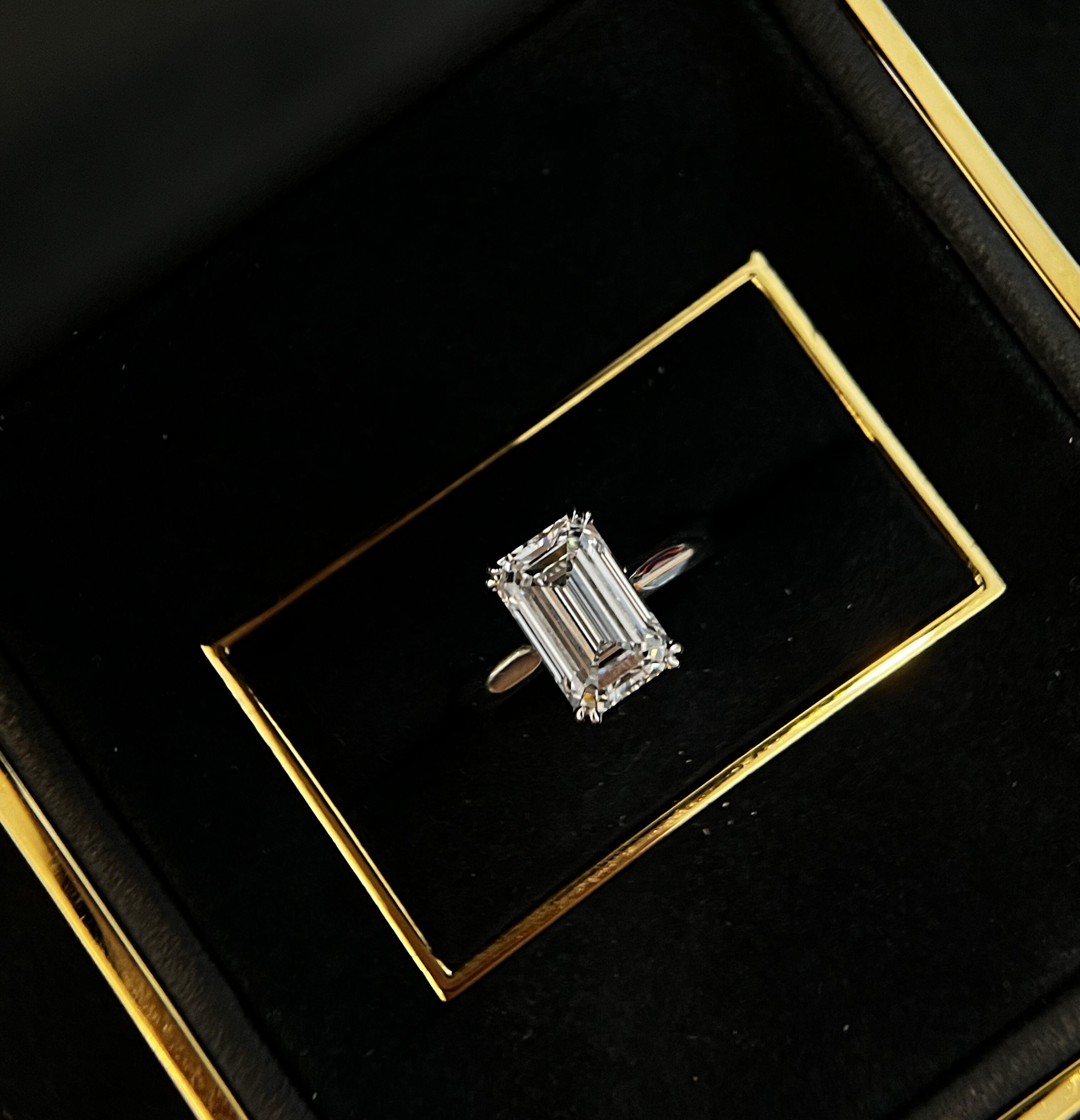
- Four/prongs: classic; double-claws add a couture touch.
- East–West: a design gesture that feels modern and effortless.
2) Three-stone (tapered baguettes or trapezoids)
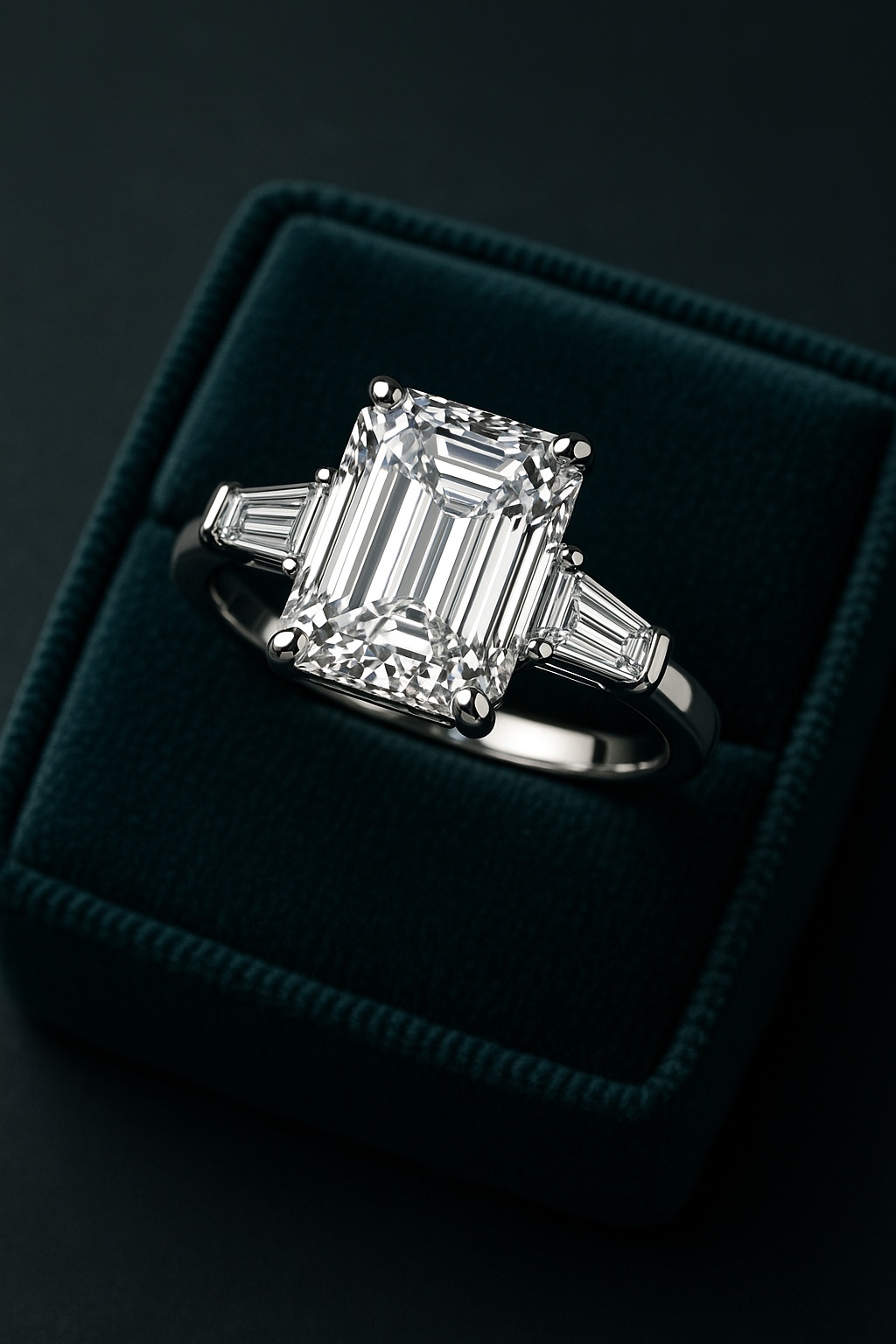
3) Art-Deco halo
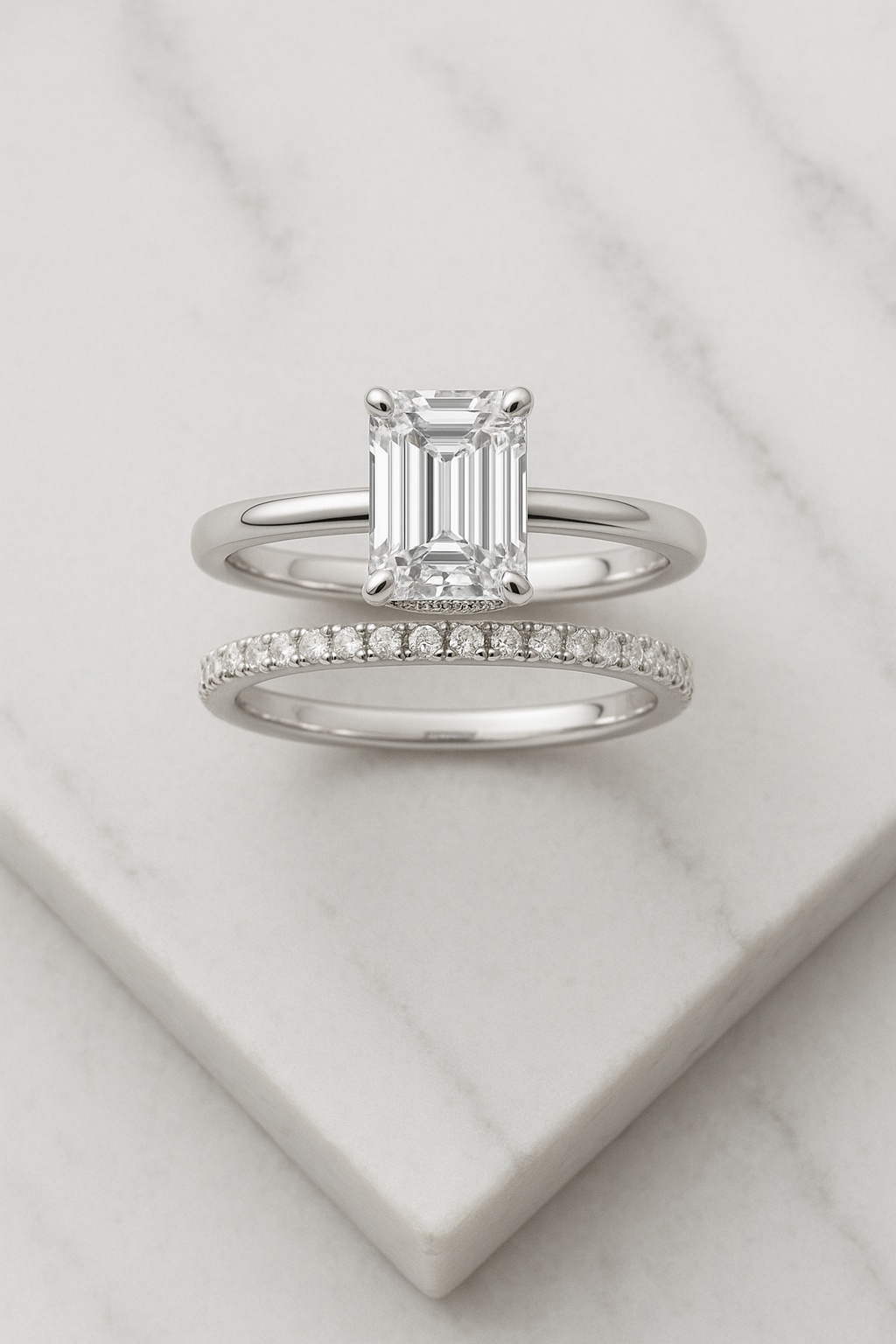
4) Sleek bezel
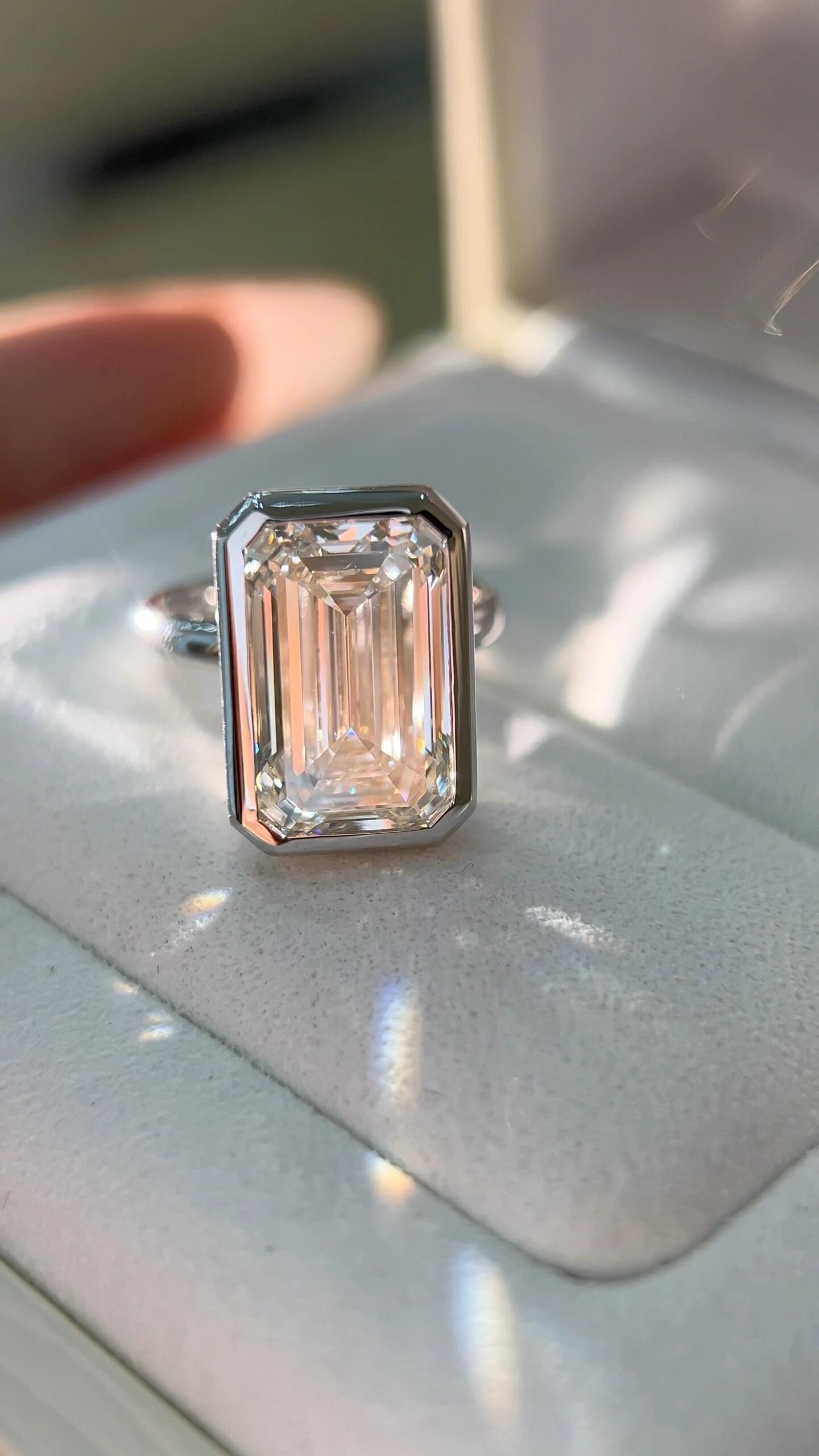
Pros & cons
Why people love it
- Refined, editorial vibe; an instant Art-Deco nod.
- Appears larger face-up than some brilliants at the same carat.
- Pairs with many aesthetics — minimal to ornate.
Trade-offs to know
- Step facets reveal inclusions more readily — shop for eye-clean.
- Broad flashes (not pin-fire scintillation) — gorgeous but different.
- Proportions matter; out-of-range specs can look glassy or dull.
How to choose (and customize)
- Start with the silhouette. Do you prefer square-leaning (1.25–1.30), classic (1.35–1.45), or elongated (1.50+)?
- Pick a metal that supports color goals. Platinum/white gold for icy; yellow/rose gold for warmth and forgiveness.
- Decide your setting language. Minimal, Deco, or bold? We’ll sketch multiple directions to visualize the personality.
- Dial the details. Prongs (double-claws?), shank width, gallery view, hidden halo, engraving, milgrain — small choices define the mood.
If you love symbolic gemstones, you might also enjoy our moss agate meaning & symbolism guide. When you’re ready, you can explore the full custom design timeline — from concept sketches to casting and hand-finishing.
Care & maintenance
- Remove during heavy work, gym, and harsh chemical exposure.
- Clean with warm water, mild dish soap, and a soft brush; dry with lint-free cloth.
- Schedule professional prong checks every 6–12 months; micro-pavé halos especially.
- Store individually in a soft pouch or ring tray to prevent scuffs.
FAQ
Are emerald cuts less sparkly?
They sparkle differently. Step cuts show broader, mirror-like flashes rather than the pin-fire glitter of brilliants. If you love clean architecture and calm light, emerald cuts are perfection.
What clarity grade is safe?
Because the table is open, clarity is more visible. Many buyers find eye-clean SI1–VS2+ excellent value — judge each stone individually in motion and natural light.
What length-to-width should I choose?
1.35–1.45 feels timeless. Shorter (1.20–1.29) reads squarer and vintage; longer (1.50+) feels editorial and finger-elongating.
Emerald cut vs. Asscher cut — how do they differ?
Asscher is essentially a square step-cut with a windmill pattern; an emerald is rectangular. Asschers feel jewel-box vintage; emeralds feel architectural and sleek.
Which setting is most secure?
Four- or double-claw prongs done well are highly secure. Bezels are the most protective and sleekest.
Have a stone in mind? Share your ideas, or see how we design and build a ring around your story.